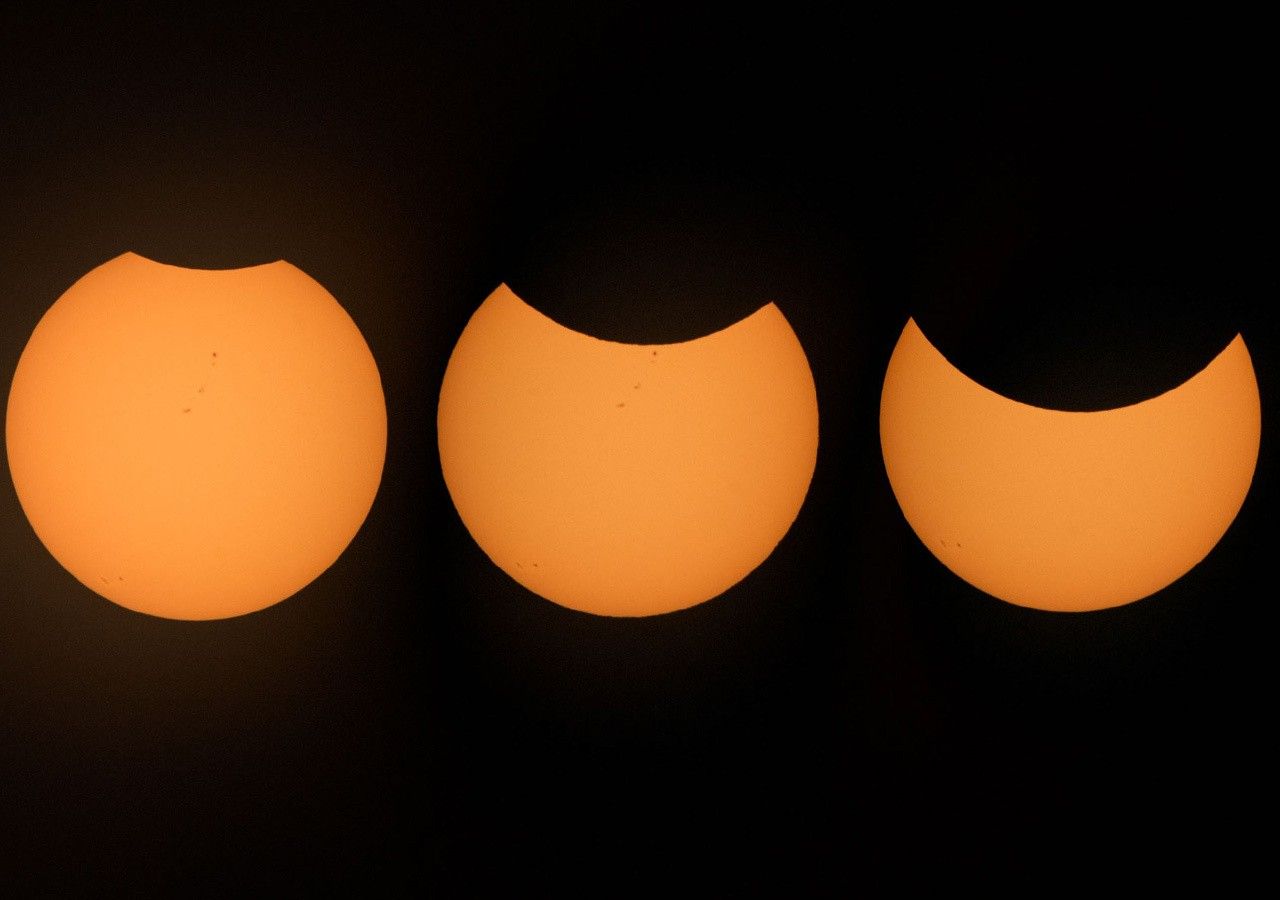
On Saturday, April 30, 2022, people in parts of southern South America, Antarctica, and the Pacific and Southern Oceans will have a chance to witness a partial eclipse of the Sun just before and during sunset.
A solar eclipse happens when the Moon moves between the Sun and Earth, casting a shadow on Earth, fully or partially blocking the Sun’s light in some areas. During a partial eclipse, the Moon and Sun are not perfectly aligned, so the Moon does not completely cover the Sun. This gives the Sun a crescent shape, or makes it appear as if a “bite” has been taken out of the Sun, depending on how much of the Sun is covered by the Moon.
NASA's Scientific Visualization Studio
As it sets in the west on the evening of April 30, the Sun will appear partially eclipsed for those with clear skies in Chile, Argentina, most of Uruguay, western Paraguay, southwestern Bolivia, southeastern Peru, and a small area of southwestern Brazil.
The eclipse will also be visible along parts of the northwestern coastline of Antarctica, in the Atlantic Ocean just off the southeastern coast of South America, including the Falkland Islands, and in much of the South Pacific Ocean and Southern Ocean.

How to Safely Watch a Partial Eclipse
It is never safe to look directly at the Sun without a safe solar filter, even if the Sun is partly or mostly obscured. When watching a partial solar eclipse, you must wear solar viewing or eclipse glasses throughout the entire eclipse if you want to face the Sun. Solar viewing or eclipses glasses are NOT regular sunglasses; regular sunglasses are not safe for viewing the Sun.
If you don’t have solar viewing or eclipse glasses, you can use an alternate indirect method, such as a pinhole projector. Pinhole projectors shouldn’t be used to look directly at the Sun, but instead to project sunlight onto a surface. Read a how-to guide for creating a pinhole viewer.
Download this fact sheet to learn more about eclipses, how to view them safely, and fun eclipse activities: Solar Eclipse Fact Sheet (Hoja informativa de un eclipse solar)

































